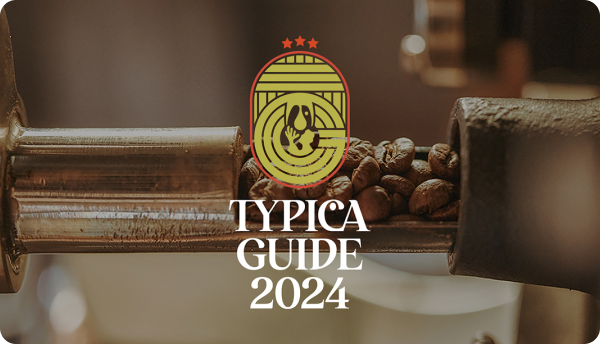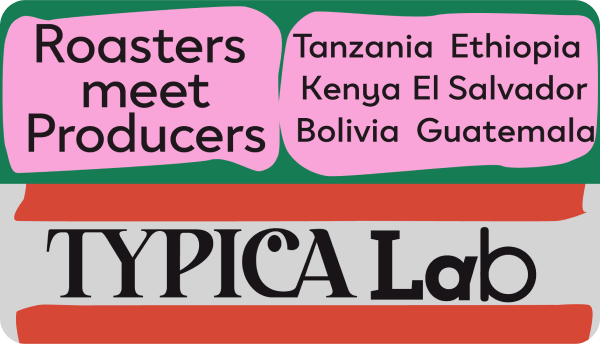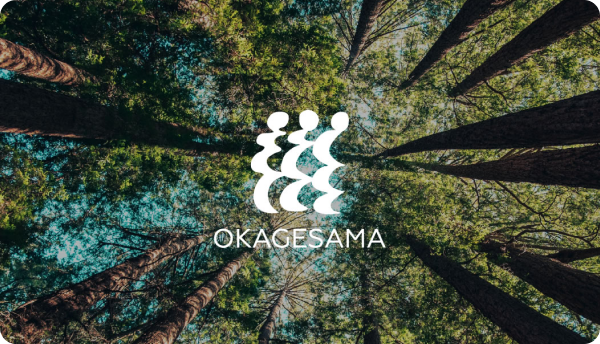

“I am still just a coffee fan even after becoming a coffee professional.” The yearnings of the owner who believes in a peaceful world.
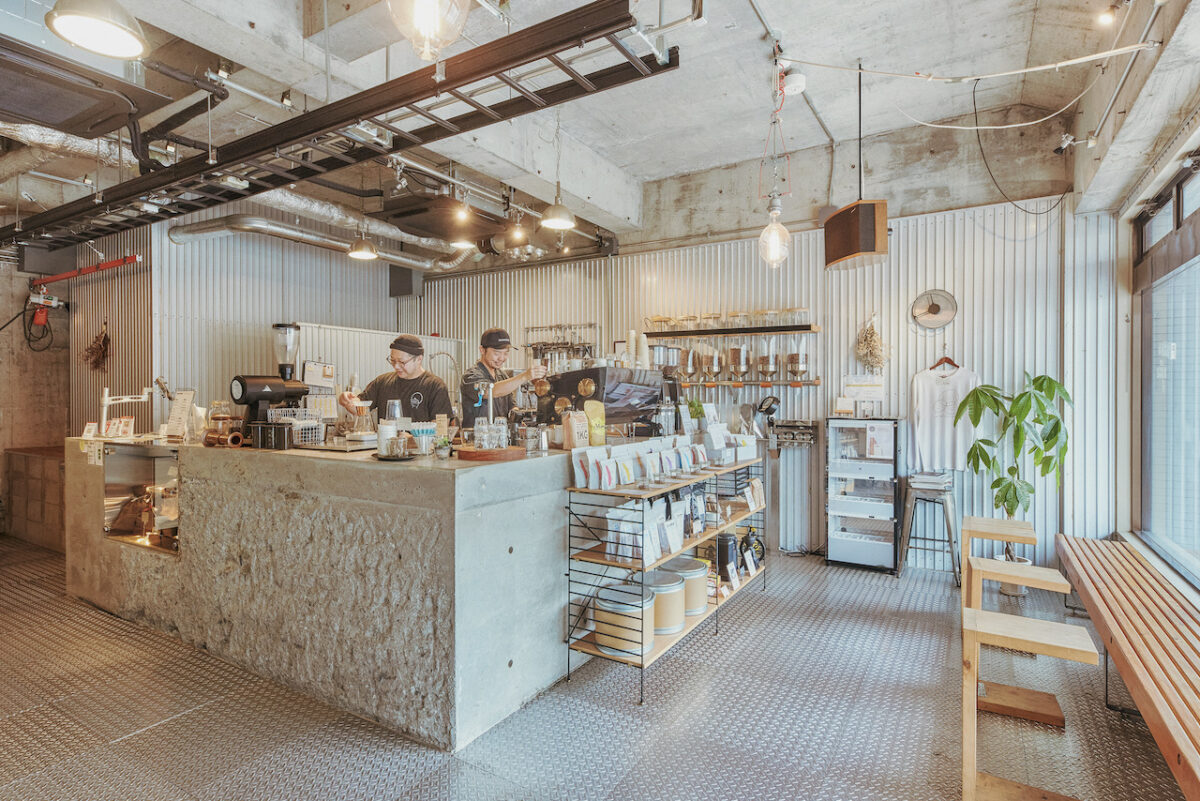
Blue Beans Roastery, known as BBR in Kagoshima prefecture, offers coffee with bright fruitiness and gentle sweetness by roasting coffee to bring out its best qualities. The smiling faces of the energetic staff add color to the shop, which is often described as a stylish and curated space. We speak with Mr. Kensuke Sakashita, the roaster and owner of BBR. ※ Titles in the texts are omitted.
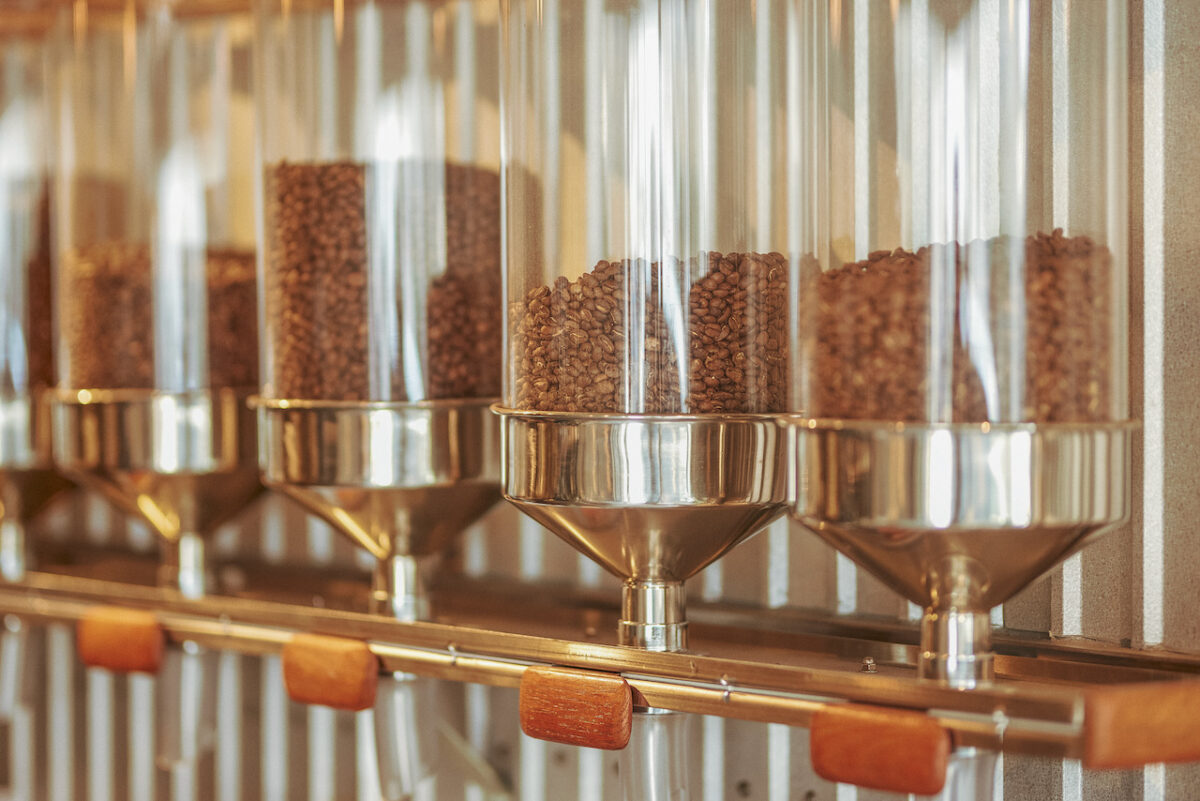
We want our customers to become our fans.
It’s mild with a good aftertaste. It’s full-bodied with a bitter taste. It’s refreshing and fruity. It’s well-balanced with harmonious notes. BBR is a specialty coffee shop without giving us the impression of being “fanatical” in coffee, or makes you feel intimidated that the store is so high-end that you can’t casually enter.
Sakashita says, “For those who don’t like bitter coffee, I recommend something ‘easy to drink’ and ‘refreshingly sweet’ with delicate acidity and fruitiness. Explaining flavors to people who are not used to drinking coffee is equivalent to using words they don’t understand. I ask my customers what they think about the coffee they had when they leave, and if they have a good impression, I try to give them more information about it.”
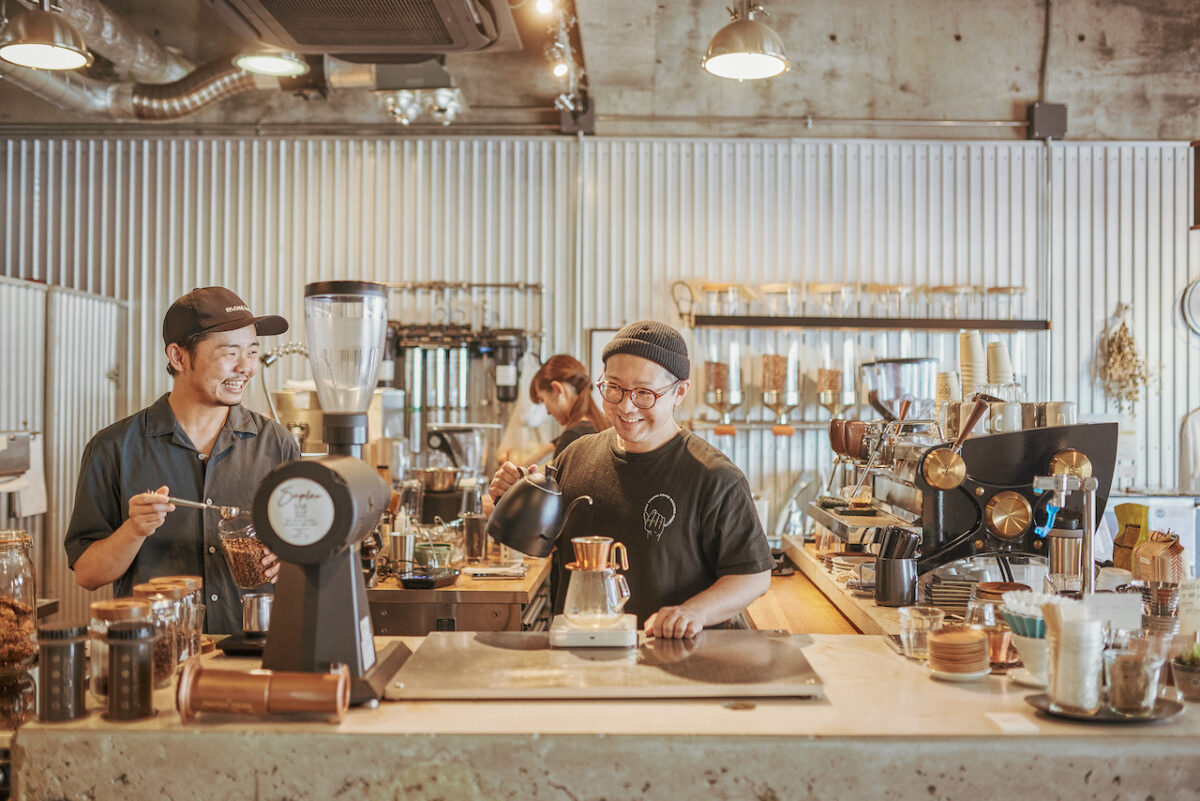
In fact, many visitors to the shop are not regular coffee drinkers.
“I’d be more than happy if I could create a comfortable space for customers to enjoy chatting with friends over a dessert and help them have ‘a good time.’ When I serve my customers, I’m consciously trying to win them over to become our fans. I try to say to returning customers something like “You had a latte the other day,” showing that we remembered their last order and try to strike up a conversation with them.”
“The customer’s face lights up when I say something like that. When we smile to each other, it immediately makes our day better. I think that feeling of happiness fosters a relationship of trust.”
The names and preferences of regular customers are shared at meetings, or when a regular customer arrives, they’re introduced to all the staff. It is the BBR way to regard customers as more than simply customers. They’re more like friends. Sakashita himself tells his staff from time to time, “Let’s think of our customers as our friends, and address them casually.”
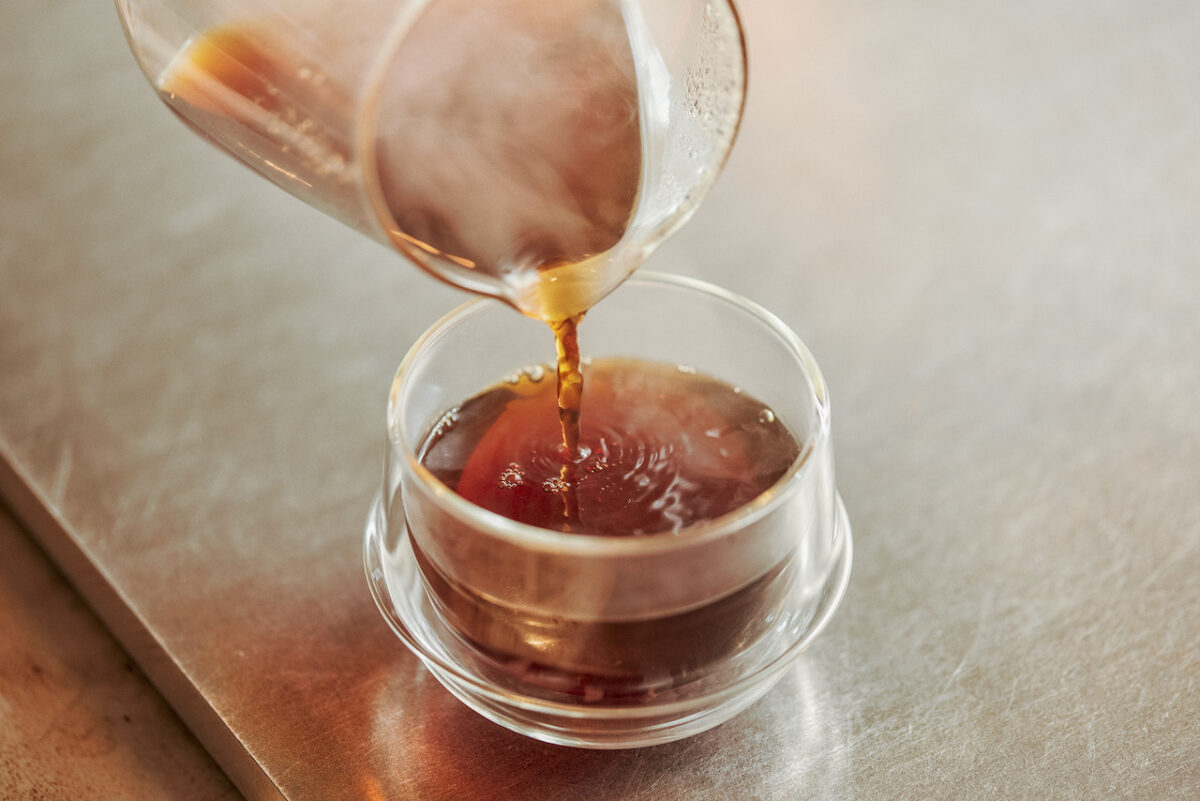
Sakashita’s interests extend beyond the shop. He aims to improve the neighborhood. As part of its efforts to reduce single-use plastic, BBR offers a 20 yen (about 20 cents) discount to customers who bring their own cup. They plan to use the money raised in this way as the donations to plant trees at elementary schools and pave sidewalks in the neighborhood.
“If people can see that drinking coffee out of their own cup is improving the appearance of the city, I think they will be more concerted in their efforts. Ideally, I would like to see this movement spread to other shops, such as bento takeaway shops. I think it would be interesting if many people could participate in city planning through BBR’s coffee without any additional effort or burden.”

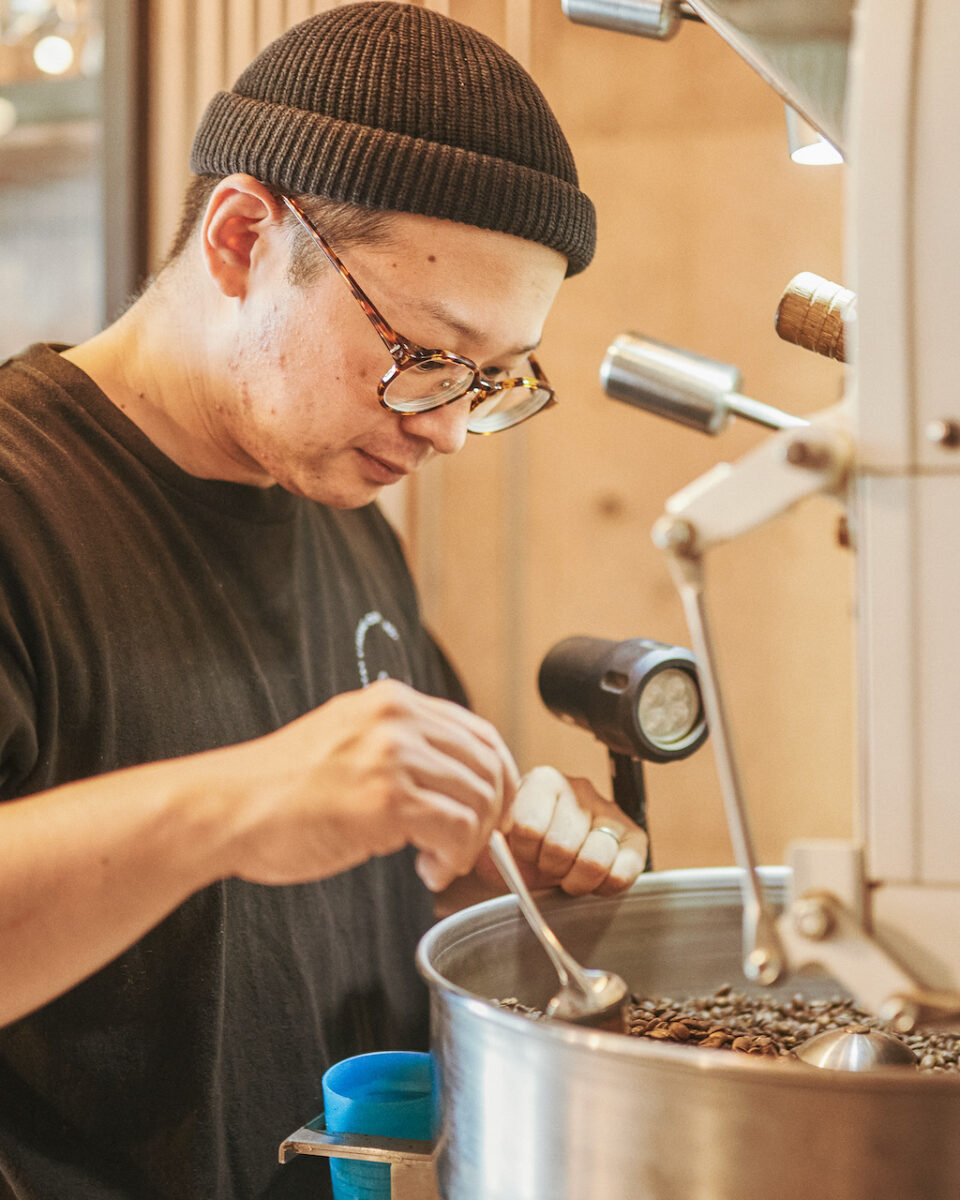
Looking for a job I could devote my passion to.
Sakashita studied Special Needs Education at university and had envisioned his future in that discipline. But when he participated in an educational training at a nursery, it made him reconsider his career path.
On the last day of the one-week educational training at the nursery, he was assigned the task of creating a one-day curriculum for the two-year-olds that he was in charge of. When he asked for feedback from the teachers at the nursery, he received an unexpected answer.
The teachers said that the children will soon be three or four years old and will eventually go to elementary school. They added that they plan the curriculum by working backwards from the point that they make it to elementary school. Sakashita says, “I felt like they were truly professionals when I heard that. I was a trainee and had my hands full with what we had to do just for the day.”
Sakashita felt the same way when he was taking a course as part of the university’s program at a school for deaf children.
“While considering the family background and personalities of the children, the teachers are very involved with them so they can live better in society. When I met the strictest teacher at my training school who had such a stance, I thought it was such an amazing job. There was only so much one person can do, but I saw firsthand the depth of the work that can’t be summed up with simple words like “support” or “guiding them emotionally.””
Overwhelmed by the special needs teachers in the education field, Sakashita reconsidered what he wanted to do. While others around him were passing certification exams one after another and finding employment, the path he finally chose was that of a ‘Freeter.’ He chose to be a ‘Freeter’ for a while, not committed to the rigidity of a specific occupation, but enjoying the freedom of plying his labor in odd jobs.
After graduating from university, he continued his part-time work at McDonald’s since his university days, and also at general store Francfranc for two years. After that, he spent a year photographing weddings. He tried to carve out something for himself while job-hopping at various positions.
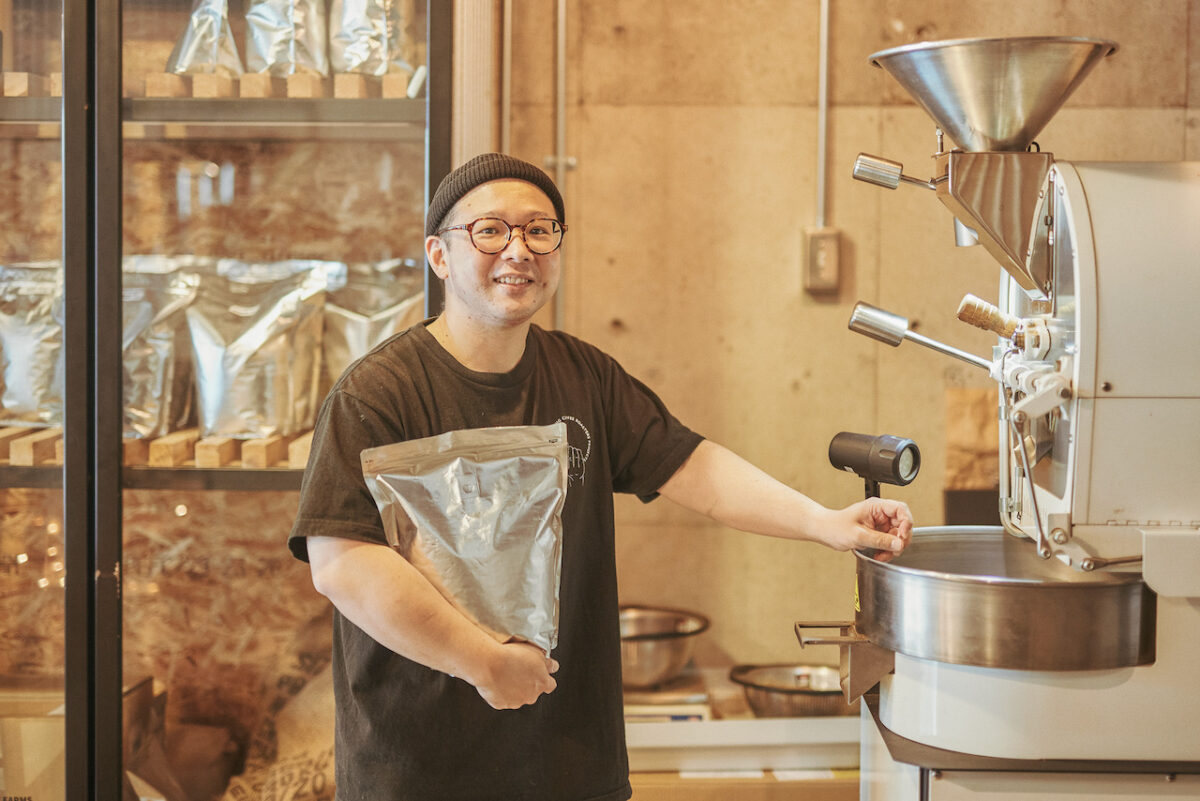
What drew Sakashita into the world of coffee was a cup of iced coffee he drank at a local coffee shop.
Sakashita states, “I’d never been a fan of bitter coffee. I could only drink a white mocha with syrup at Starbucks. They ran out of syrup and milk at the condiment stand, so I just drank it as it was. I was hesitant to drink it, but when I did and it was really good. After realizing that coffee actually tastes good, I started drinking my iced coffee black even at Starbucks.”
Sakashita, who had somehow become acquainted with a Starbucks barista, was prompted one day, ‘Today, you can choose between Colombian iced coffee and Ethiopian iced coffee.’
“That was the first time I learned that coffee is produced in many different countries known as coffee origins. I felt a tremendous sense of yearning at the thought of drinking something that came from the other side of the world. From that day onwards, I started going to coffee shops and buying coffee-related magazines, and became completely immersed in the world of coffee.”

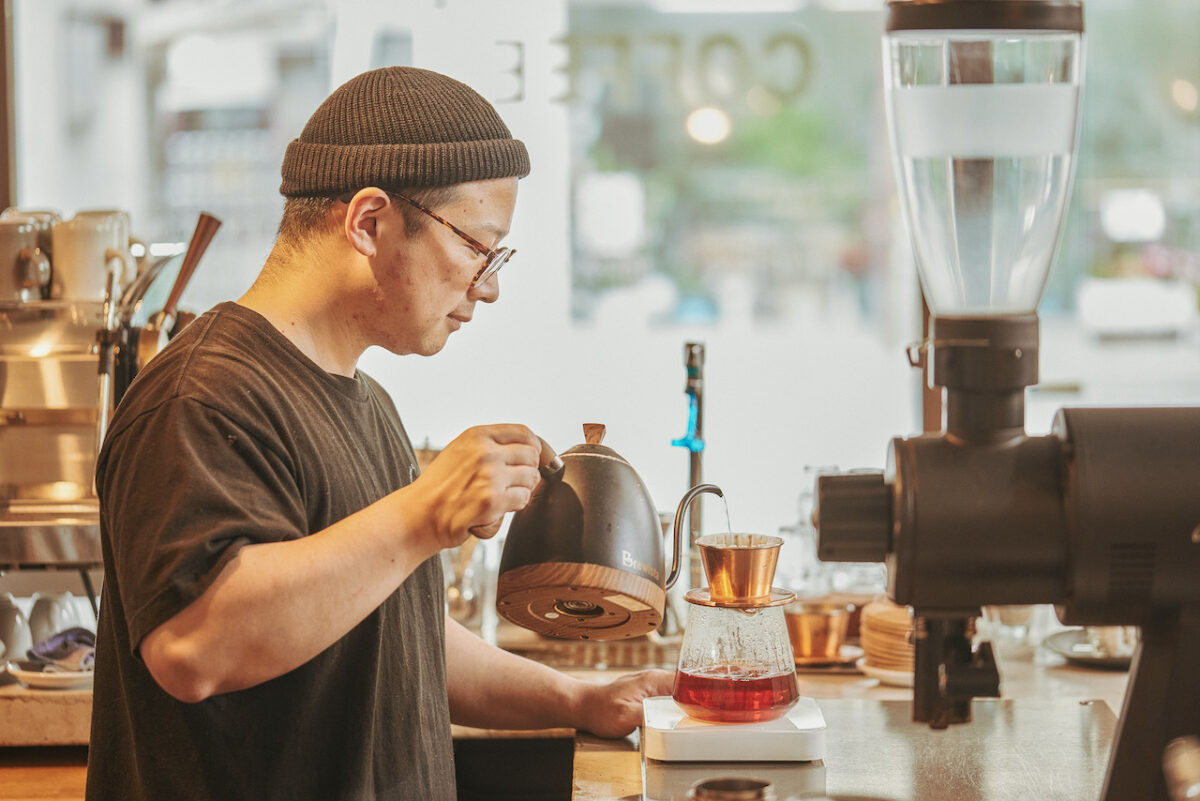
I want to be surrounded by coffee all the time.
He started working part-time at Starbucks when he was in his late twenties to get deeper into the world of coffee. It was partly to earn money during the off-seasons for weddings when he was not working on photo shoots, but the main reason was that he had always been a fan of Starbucks and was attracted to its corporate culture. The feeling grew even stronger when he started working there, and became a shift supervisor (SSV), in charge of managing store operations, by his second year.
“When I was making a latte, I knew the milk steam is going to be good and it’s going to taste great. When I felt the team was coming together, or when I learned more about the producers and the coffee, I felt excitement and joy in all of these experiences, but the main reason I became a SSV was because I resonated with the mission at Starbucks.”
“If we treat our customers with sincerity, we can connect with them by exchanging smiles, and give them an emotional connection even if it is only for a moment. To do that, all the staff remembered the names of regular customers and made small talk with them. I liked this corporate culture.”
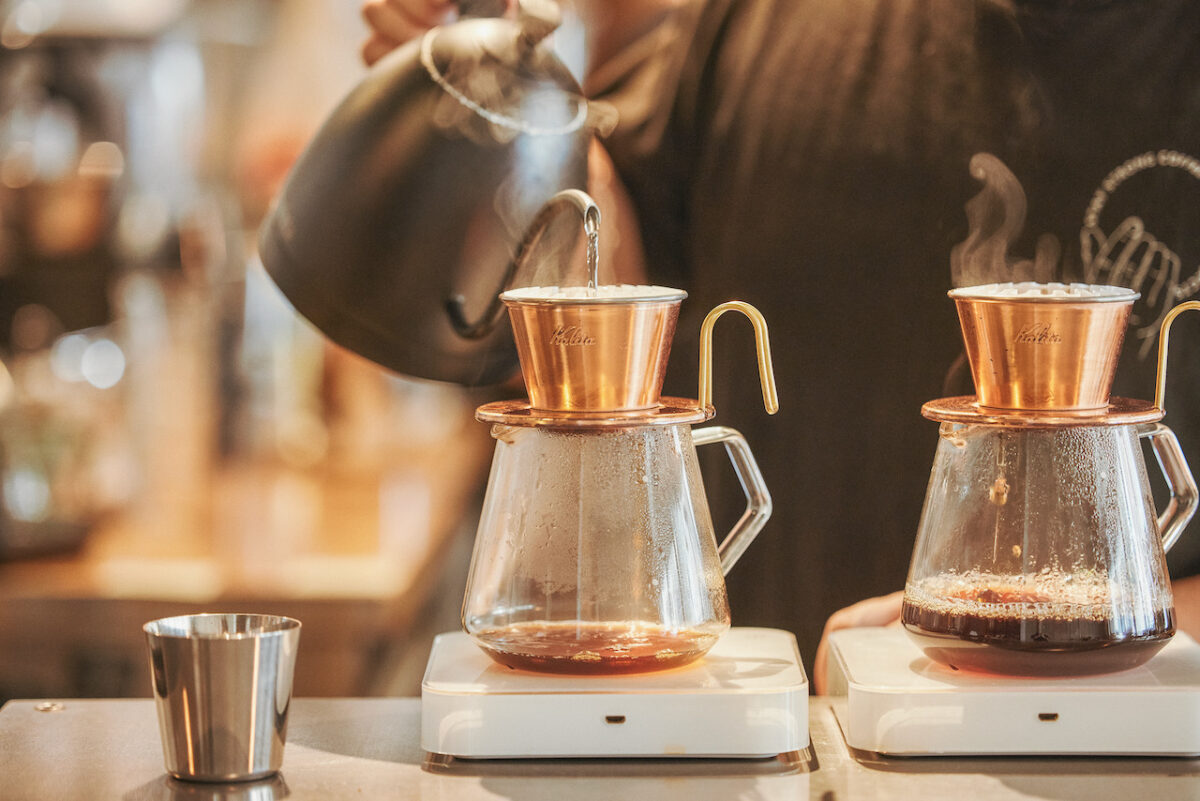
However, as his role changed from a staff member to a SSV, Sakashita began to feel something was missing.
“Even when I was a SSV, my boss often told me, ‘You can’t look at things from the same perspective as a part-time staff member,’ but I still had reservations about graduating from a player to become a supervisor or coach. If I had stayed at Starbucks, I would have learned how to sell products and how to expand the business. But as a coffee man, I still always wanted to be surrounded by coffee and deliver it directly to my customers. At the time I didn’t know anything about specialty coffee, so I also wanted to know more than just Starbucks Coffee.”
It was during this time that “Neighborhood and Coffee,” a new type of cafe by Starbucks where coffee professionals gathered was open. Sakashita wanted to polish his brewing skills to represent Starbucks at the Japan Barista Championship (JBC), so he told the company in an interview that he would like to split his time between his current Starbucks store and the “Neighborhood and Coffee” branch. The answer he received, however, was, ‘I think another coffee shop would be more aligned with your goals.’

He still loved Starbucks, but if he couldn’t do what he wanted to do, he had no choice but to quit after working there for four years. Just as he was mulling over this, he was asked if he would like to open a coffee stand at the dining bar in the morning and afternoon hours. In October 2016, Sakashita opened HAY COFFEE STAND that served specialty coffee.
After working at HAY COFFEE STAND for a while, he closed HAY COFFEE STAND, and he became the store manager of BBR, which was owned by a dentist, in search of a more flexible business environment where he could offer a wider range of menu items in January 2019. He has been eating and breathing coffee and brushing up his roasting skills by learning techniques from YouTube.
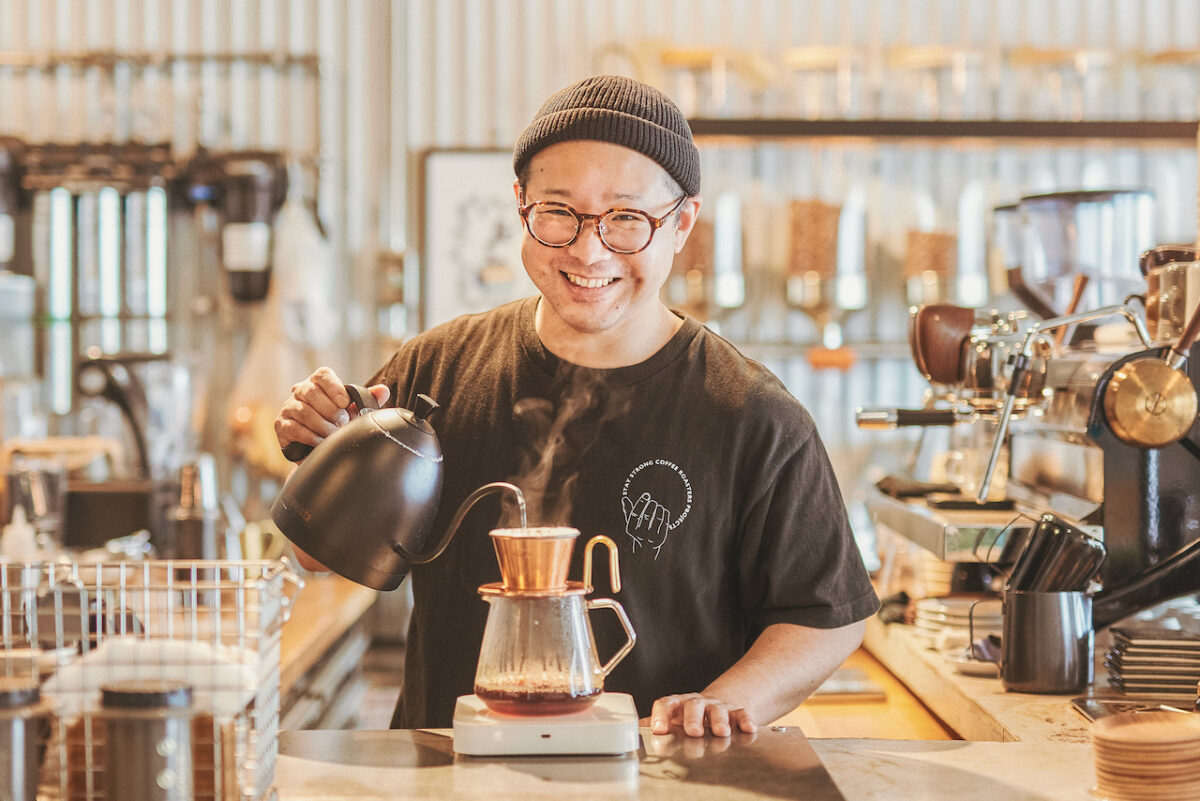
At BBR, a customer who has known Sakashita from his Starbucks days showed up one day. The customer, who was a regular at the time, had been following Sakashita from Starbucks to HAY COFFEE STAND and now BBR.
Sakashita states, “At Starbucks, he always drank drip coffee, so I thought he would not like the light roast coffee made by the Aeropress. I had thought so, but when he tried it, he really liked it. He has been coming to the store almost every day since then and when I participated in the Aeropress Championship in Tokyo in 2017, he came to cheer me on from the front row.”
“Yet, I don’t have any personal relationship with him. We don’t talk about each other’s personal lives. Even so, I am happy that he has been coming to our three stores for about nine years and I think it is the relationship that can only be experienced in this line of work.”

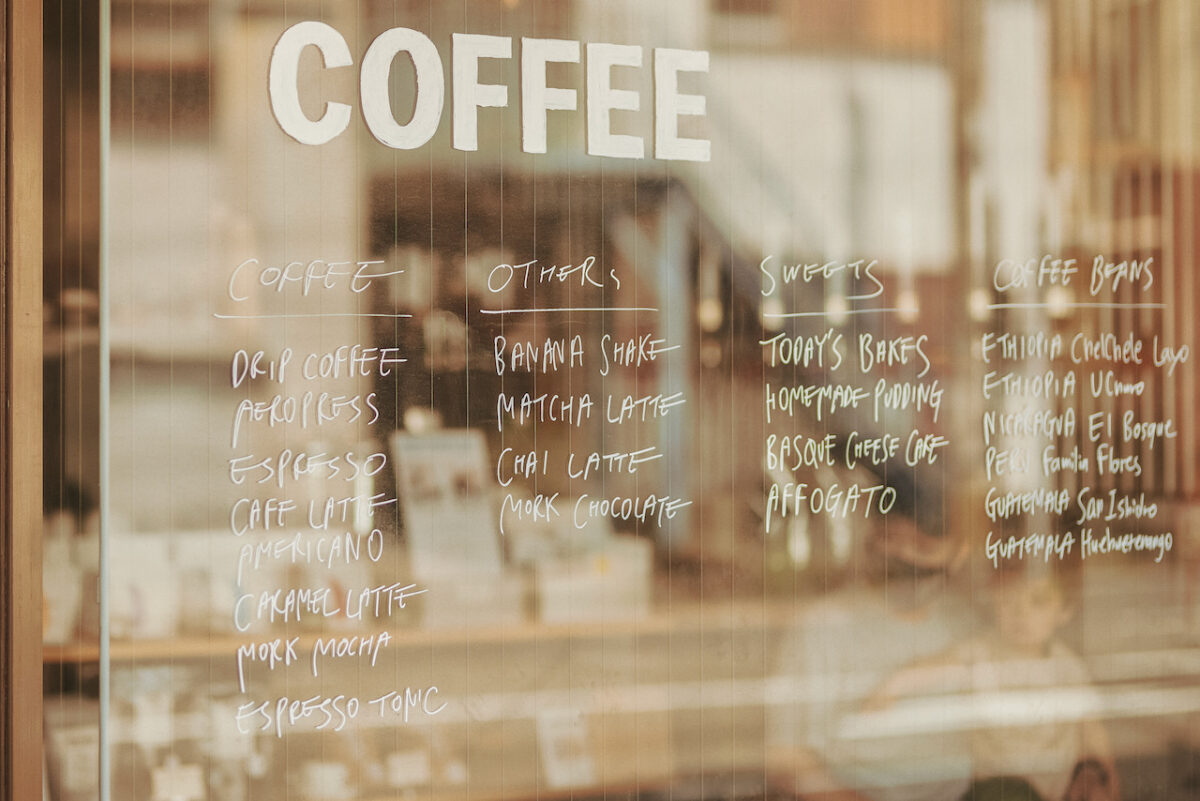
Creating a peaceful world with coffee.
One year after the opening the shop with just as the number of customers was gradually increasing, Covid-19 struck. When a state of emergency was declared across Japan, BBR stopped serving food and beverages in-store and switched to takeaways only. In the midst of the uncertainty, many people who seemed to be working from home started visiting the store, and orders from the online store also increased. In fact, the store became busier than before the pandemic hit.
Sakashita says, “I feel very happy with my job by playing my favorite music in store and making coffee for my customers. I feel I have a very satisfying job. I always tell that to my staff every chance I get. I am confirming my love for coffee over and over again and the fact that I am able to do my job thanks to our customers. I deeply feel my happiness every single day.”
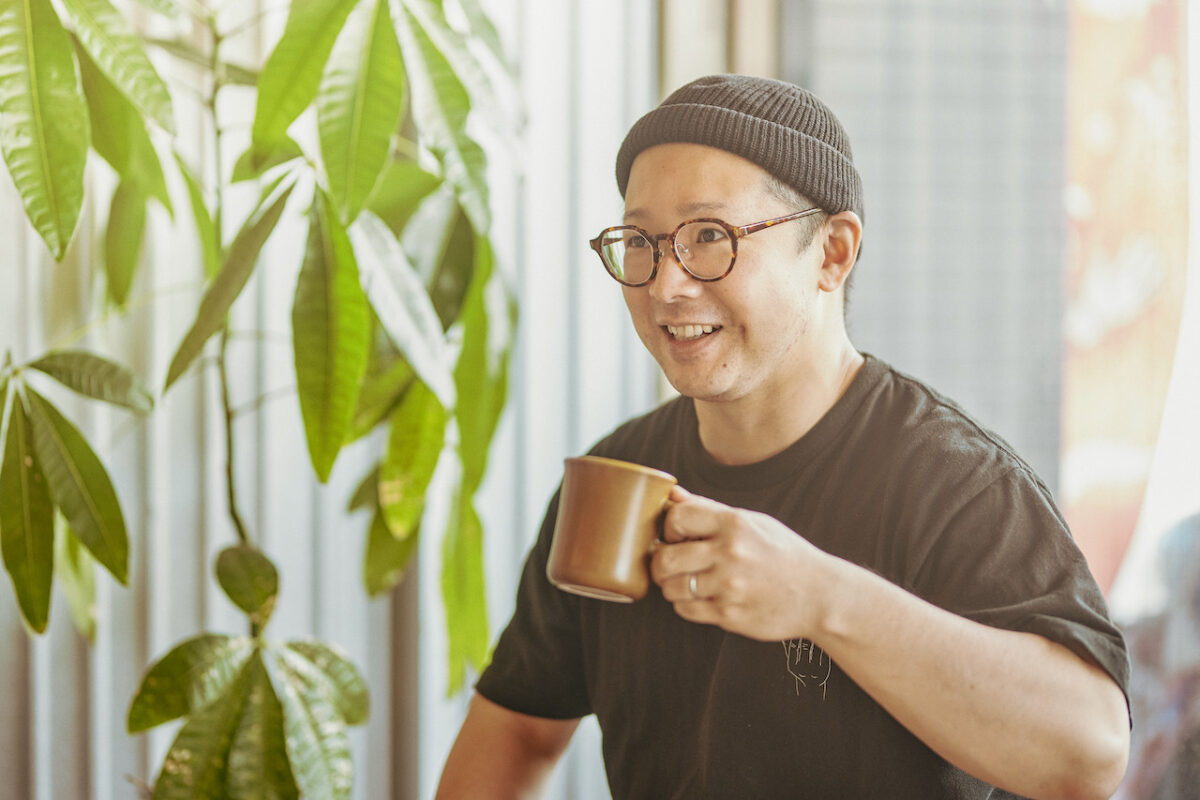
Sakashita, who has formed a band with his local friends, says, “Specialty coffee and music are similar in the way they are enjoyed.”
“When we drink coffee from roasters from other prefectures and overseas, we share our impressions on the coffee with each other, saying things like “It’s delicious” or “It tastes different from what I expected.” It reminds me of the time when I was a junior high school student listening to a new album of my favorite band and discussing things with friends like, “I love the intro” or “How did they record that?” It brings back happy memories.”
“I think coffee is a very peaceful product. I want to roast good coffee, brew good coffee, and spread the word about good coffee. Roasters, baristas, and other people involved in the coffee industry are all genuinely interested in this, which is why we are so open and have friendly relationships by feeding off each other’s energy.”
“So even when I just talk to them for a little while, I can feel like I’ve been working together with them through four years at university. I don’t feel jealous of the other roasters’ success. I think it’s because I don’t evaluate coffee based on whether it’s good or bad, but rather from the perspective of trying to find the good in it.”
Even he has become a coffee professional, he never forgets the feeling of simply being a fan. In his quest to seek good coffee, Sakashita’s peaceful mindset is probably what is expanding the circle of people around him.
Originally written in Japanese by Tatsuya Nakamichi
MY FAVORITE COFFEE
“The best coffee is the one I drink with someone else. Whether it tastes good or not, we can share, discuss, reflect on the taste, and different conversations come up from those moments. Not only am I drinking coffee alone or with someone else but also whenever I am brewing coffee, someone else’s face always comes to mind.”


